Dr. Sylvie Herrmann
Contact / Address
Dr. Sylvie Herrmann
Guest Scientist
Department of Soil Ecology
Helmholtz-Center for Environmental Research - UFZ
Theodor-Lieser-Str. 4 | 06120 Halle (Saale)
Germany
Tel.:
Fax:
Email:
0345 558 5412
0345 558 5449
sylvie.herrmann@ufz.de
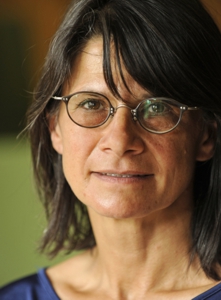
Research topics
- Plant morphogenesis
- Endogenous rhythmic growth
- Rhizogenesis
- in vitro culture
- Plant symbiosis
- Ectomycorrhizas
- Gene transcription and regulation
- Multitrophic interactions
Ectomycorrhizal symbiosis and gene regulation
Pedunculate oak (Quercus robur L.) is a foundation forest tree species in the whole Northern hemisphere. Consecutively to forest degradation and after important storms, a reforestation research program was initiated in south of Germany in the 90s, with the goal to optimize the production of performing oak and beech saplings by replacing intensive fertilization in nurseries by inoculation with selected strains of symbiotic ectomycorrhizal fungi. In this frame Sylvie Herrmann started to work with the oak clone DF159 in 1990 to get a continuous production of saplings by micropropagation in order to rationalize comparative performance tests of mycorrhizal fungal strains.
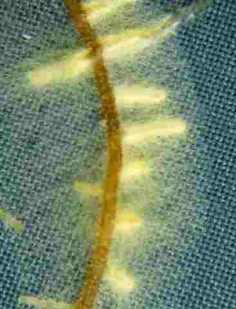
Photo: Sylvie Herrmann/UFZ
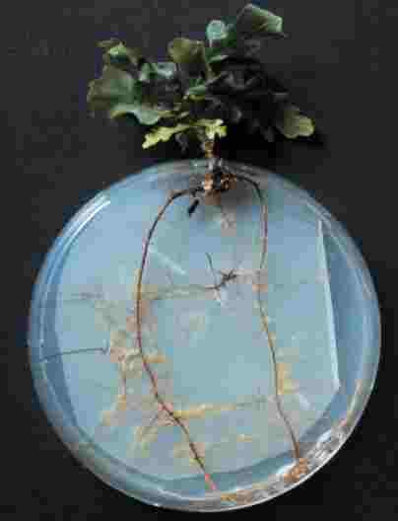
Photo: Sylvie Herrmann/UFZ
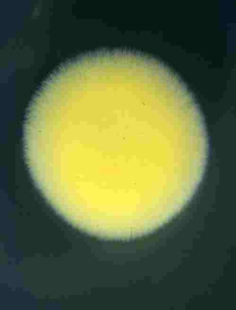
Photo: Sylvie Herrmann/UFZ
The preliminary established Petri dish model system enabled us to investigate the interplays between mycorrhizal symbiosis and the expression of the endogenous rhythmic growth (ERG), a developmental trait characteristic of oak trees characterized by alternating shoot and root growth flushes. Based on the observation that inoculation of DF159 oak microcuttings with the ectomycorrhizal fungus (EMF) Piloderma croceum markedly triggers plant growth already before the onset of mycorrhiza formation, this dual model system was selected to study the regulation of photosynthesis and differential expression of plant genes at early stages of mycorrhizal symbiosis in the frame of the DFG Research Unit MolMyk (1084).
Impact of endogenous rhythmic growth (ERG) on multitrophic interactions under controlled conditions – development of an oak phytometer
In the frame of the DFG research consortium TrophinOak , we adapted the microcosm system with in vitro propagated plants of the oak clone DF159 to study the impact of endogenous rhythmic growth (ERG) on the interplay between plant development and above- or below-ground multitrophic interactions. Transcriptome analyses and pulse labelling with stable isotopes enabled us to compare the effects of beneficial and detrimental organisms interacting with the oaks at different phases of the ERG in mycorrhizal versus non-mycorrhizal plants. The results of such lab analyses constitute a baseline for the RU PhytOakmeter, but also to monitor the behavior of clonal oaks after their field release in tree biodiversity experiments (MyDiv) or under various climatic and land use conditions in TERENO sites and across Europe.
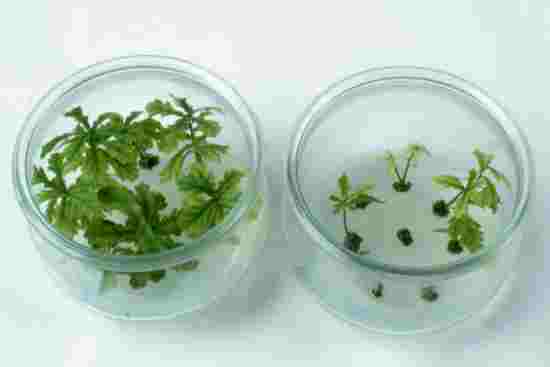
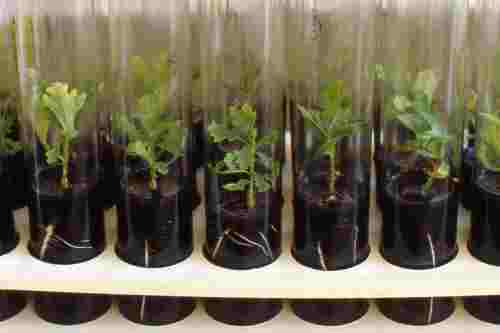
TrophinOak/PhytOakmeter platform
These works done in particular in the frame of the DFG Research Unit MolMyk (1084) and the TrophinOak consortium led to the Oak Group that Sylvie Herrmann implemented at the UFZ in 2005 to develop the oak experimental platform until her retirement in September 2022 -
TrophinOak/PhytOakmeter
.

The group was responsible for the “Oak DF159 micropropagation unit” and delivers all clonal oak microcutting and saplings used for lab and field experimentations in the frame of the TrophinOak/PhytOakmeter projects until 2022.
Completed Research projects
Completed projects
PlastOak - Adaption of oaks to abiotic and biotic pressure: iDiv flexpool grant in cooperation with Prof. Nicole van DamHow do trees adapt to changing abiotic and biotic pressure during their long life? Using the endogenous rhythmic growth trait of oak trees to disentangle interplays between morphological, genetic and defense-metabolic plasticity.
Microbiome associated to roots of a clonal oak tree: DAAD supported grant
Molecular characterization of the microbiome in the root zone of a clonal oak tree used as an indicator system across different field sites in central Germany and Europe.
Cross comparing molecular and physiological regulation in ectomycorrhizal interactions of different fungi with oak trees: a way to understand biodiversity emergence in symbioses.
TrophinOak - Multitrophic interactions with oaks
Gene regulation and resource allocation in oaks during multitrophic interactions.
Current Position
since September
2022
Guest Scientist
Department of Soil Ecology (BOOEK)
at the Helmholtz Center for Environmental Research - UFZ
Previous positions
2005 - 2022
Senior Scientist,
Department of Soil ecology (BOOEK)
Department of Community Ecology (BZF)
at the Helmholtz Center for Environmental Research - UFZ
2003 - 2005
Senior Scientist, University of Leipzig (Department of Terrestrial Ecology)
1999 - 2003
Senior Scientist, Friedrich-Schiller University of Jena (Department of Environmental Sciences, Institute of Ecology)
1996 - 1999
Scientist, Technical University of Braunschweig (Institute of Microbiology) (Germany)
1993 - 1996
Scientist, Federal Research Center of Agriculture in Braunschweig (Institute of Soil Biology) (Germany)
1990 - 1992
Scientist, University of Tübingen (Department of Botany/Mycology) (Germany)
Degrees / Formation
1982 - 1986
Doctoral thesis in plant biology, University Louis Pasteur of Strasbourg (F)
Contribution to the study of morphogenetical potentialities along the inflorescence of Phalaenopsis sp.: elaboration of an in vitro progagation procedure for Phalaenopsis orchids.
1998 - 1990
Postdoctoral fellowship "Marie Curie" EU , stage at the Department of Plant Chemistry of the University of Tübingen (D)
Characterization of plant regeneration stages from protoplasts for different potato lines (Solanum tuberosum L.) with isoenzymes, DNA methylation, and proteins. Use of RFLP techniques for identification of the regenerated potato lines
Publications
Index:
You could use our publication index for further requests.
Text Publication
Articles in ISI listed journals (29)
- Quiroga-González, C.A., Prada-Salcedo, L.D., Buscot, F., Tarkka, M., Herrmann, S., Bouffaud, M.-L., Goldmann, K. (2025):
Severe drought impacts tree traits and associated soil microbial communities of clonal oaks
Environ. Microbiome 20 , art. 63 10.1186/s40793-025-00720-7 - Purahong, W., Tanunchai, B., Ji, L., Stellmach, H., Hilman, B., Schulze, E.-D., Hause, B., Tarkka, M., Buscot, F., Herrmann, S. (2025):
Plasticity of symbiotroph-saprotroph lifestyles of Piloderma croceum associated with Quercus robur L.
Commun. Biol. 8 , art. 1344 10.1038/s42003-025-08762-w - Fernández, I., Bouffaud, M.-L., Martínez-Medina, A., Schädler, M., Tarkka, M.T., Weinhold, A., van Dam, N.M., Herrmann, S., Buscot, F. (2025):
Endogenous rhythmic growth and ectomycorrhizal fungi modulate priming of antiherbivore defences in subsequently formed new leaves of oak trees
J. Ecol. 113 (6), 1382 - 1396 10.1111/1365-2745.14263 - Albracht, C., Buscot, F., Eisenhauer, N., Gebler, A., Herrmann, S., Schmidt, A., Tarkka, M., Goldmann, K. (2025):
Invertebrate decline has minimal effects on oak-associated microbiomes
Environ. Microbiol. 27 (2), e70051 10.1111/1462-2920.70051 - Tarkka, M.T., Grams, T.E.E., Angay, O., Kurth, F., Maboreke, H.R., Mailänder, S., Bönn, M., Feldhahn, L., Fleischmann, F., Ruess, L., Schädler, M., Scheu, S., Schrey, S.D., Buscot, F., Herrmann, S. (2021):
Ectomycorrhizal fungus supports endogenous rhythmic growth and corresponding resource allocation in oak during various below- and aboveground biotic interactions
Sci. Rep. 11 , art. 23680 10.1038/s41598-021-03132-y - Habiyaremye, J.d.D., Herrmann, S., Reitz, T., Buscot, F., Goldmann, K. (2021):
Balance between geographic, soil, and host tree parameters to shape soil microbiomes associated to clonal oak varies across soil zones along a European North-South transect
Environ. Microbiol. 23 (4), 2274 - 2292 10.1111/1462-2920.15433 - Habiyaremye, J.d.D., Goldmann, K., Reitz, T., Herrmann, S., Buscot, F. (2020):
Tree root zone microbiome: Exploring the magnitude of environmental conditions and host tree impact
Front. Microbiol. 11 , art. 749 10.3389/fmicb.2020.00749 - Bouffaud, M.-L., Herrmann, S., Tarkka, M.T., Bönn, M., Feldhahn, L., Buscot, F. (2020):
Oak displays common local but specific distant gene regulation responses to different mycorrhizal fungi
BMC Genomics 21 , art. 399 10.1186/s12864-020-06806-5 - Graf, M., Bönn, M., Feldhahn, L., Kurth, F., Grams, T.E.E., Herrmann, S., Tarkka, M., Buscot, F., Scheu, S. (2019):
Collembola interact with mycorrhizal fungi in modifying oak morphology, C and N incorporation and transcriptomics
R. Soc. Open Sci. 6 (3), art. 181869 10.1098/rsos.181869 - Bacht, M., Tarkka, M.T., Fernández López, I., Bönn, M., Brandl, R., Buscot, F., Feldhahn, L., Grams, T.E.E., Herrmann, S., Schädler, M. (2019):
Tree response to herbivory is affected by endogenous rhythmic growth and attenuated by cotreatment with a mycorrhizal fungus
Mol. Plant-Microbe Interact. 32 (6), 770 - 781 10.1094/MPMI-10-18-0290-R - Plomion, C., Aury, J.-M., Amselem, J., Leroy, T., Murat, F., Duplessis, S., Faye, S., Francillonne, N., Labadie, K., Le Provost, G., Lesur, I., Bartholomé, J., Faivre-Rampant, P., Kohler, A., Leplé, J.-C., Chantret, N., Chen, J., Diévart, A., Alaeitabar, T., Barbe, V., Belser, C., Bergès, H., Bodénès, C., Bogeat-Triboulot, M.-B., Bouffaud, M.-L., Brachi, B., Chancerel, E., Cohen, D., Couloux, A., Da Silva, C., Dossat, C., Ehrenmann, F., Gaspin, C., Grima-Pettenati, J., Guichoux, E., Hecker, A., Herrmann, S., Hugueney, P., Hummel, I., Klopp, C., Lalanne, C., Lascoux, M., Lasserre, E., Lemainque, A., Desprez-Loustau, M.-L., Luyten, I., Madoui, M.-A., Mangenot, S., Marchal, C., Maumus, F., Mercier, J., Michotey, C., Panaud, O., Picault, N., Rouhier, N., Rué, O., Rustenholz, C., Salin, F., Soler, M., Tarkka, M., Velt, A., Zanne, A.E., Martin, F., Wincker, P., Quesneville, H., Kremer, A., Salse, J. (2018):
Oak genome reveals facets of long lifespan
Nat. Plants 4 , 440 - 452 10.1038/s41477-018-0172-3 - Ferlian, O., Cesarz, S., Craven, D., Hines, J., Barry, K.E., Bruelheide, H., Buscot, F., Haider, S., Heklau, H., Herrmann, S., Herrmann, S., Kühn, P., Pruschitzki, U., Schädler, M., Wagg, C., Weigelt, A., Wubet, T., Eisenhauer, N. (2018):
Mycorrhiza in tree diversity–ecosystem function relationships: conceptual framework and experimental implementation
Ecosphere 9 (5), e02226 10.1002/ecs2.2226 - Ferlian, O., Biere, A., Bonfante, P., Buscot, F., Eisenhauer, N., Fernandez, I., Hause, B., Herrmann, S., Krajinski-Barth, F., Meier, I.C., Pozo, M.J., Rasmann, S., Rillig, M.C., Tarkka, M.T., van Dam, N.M., Wagg, C., Martinez-Medina, A. (2018):
Growing research networks on mycorrhizae for mutual benefits
Trends Plant Sci. 23 (11), 975 - 984 10.1016/j.tplants.2018.08.008 - Eisenhauer, N., Herrmann, S., Hines, J., Buscot, F., Siebert, J., Thakur, M.P. (2018):
The dark side of animal phenology
Trends Ecol. Evol. 33 (12), 898 - 901 10.1016/j.tree.2018.09.010 - Maboreke, H.R., Graf, M., Grams, T.E.E., Herrmann, S., Scheu, S., Ruess, L. (2017):
Multitrophic interactions in the rhizosphere of a temperate forest tree affect plant carbon flow into the belowground food web
Soil Biol. Biochem. 115 , 526 - 536 10.1016/j.soilbio.2017.09.002 - Maboreke, H.R., Feldhahn, L., Bönn, M., Tarkka, M.T., Buscot, F., Herrmann, S., Menzel, R., Ruess, L. (2016):
Transcriptome analysis in oak uncovers a strong impact of endogenous rhythmic growth on the interaction with plant-parasitic nematodes
BMC Genomics 17 , art. 627 10.1186/s12864-016-2992-8 - Herrmann, S., Grams, T.E.E., Tarkka, M.T., Angay, O., Bacht, M., Bönn, M., Feldhahn, L., Graf, M., Kurth, F., Maboreke, H., Mailander, S., Recht, S., Fleischmann, F., Ruess, L., Schädler, M., Scheu, S., Schrey, S., Buscot, F. (2016):
Endogenous rhythmic growth, a trait suitable for the study of interplays between multitrophic interactions and tree development
Perspect. Plant Ecol. Evol. Syst. 19 , 40 - 48 10.1016/j.ppees.2016.02.003 - Lesur, I., Le Provost, G., Bento, P., Da Silva, C., Leplé, J.-C., Murat, F., Ueno, S., Bartholomé, J., Lalanne, C., Ehrenmann, F., Noirot, C., Burban, C., Léger, V., Amselem, J., Belser, C., Quesneville, H., Stierschneider, M., Fluch, S., Feldhahn, L., Tarkka, M., Herrmann, S., Buscot, F., Klopp, C., Kremer, A., Salse, J., Aury, J.-M., Plomion, C. (2015):
The oak gene expression atlas: insights into Fagaceae genome evolution and the discovery of genes regulated during bud dormancy release
BMC Genomics 16 , art. 112 10.1186/s12864-015-1331-9 - Kurth, F., Feldhahn, L., Bönn, M., Herrmann, S., Buscot, F., Tarkka, M.T. (2015):
Large scale transcriptome analysis reveals interplay between development of forest trees and a beneficial mycorrhiza helper bacterium
BMC Genomics 16 , art. 658 10.1186/s12864-015-1856-y - Kohler, A., Kuo, A., Nagy, L.G., Morin, E., Barry, K.W., Buscot, F., Canbäck, B., Choi, C., Cichocki, N., Clum, A., Colpaert, J., Copeland, A., Costa, M.D., Doré, J., Floudas, D., Gay, D., Girlanda, M., Henrissat, B., Herrmann, S., Hess, J., Högberg, N., Johansson, T., Khouja, H.-R., La Butti, K., Lahrmann, U., Levasseur, A., Lindquist, E.A., Lipzen, A., Marmeisse, R., Martino, E., Murat, C., Chew, Y., Ngan, C.Y., Nehls, U., Plett, J.M., Pringle, A., Ohm, R.A., Perotto, S.P., Riley, R., Rineau, F., Ruytinx, J., Salamov, A., Shah, F., Sun, H., Tarkka, M., Tritt, A., Veneault-Fourrey, C., Zuccaro, A., Tunlid, A., Grigoriev, I.V., Hibbett, D.S., Martin, F. (2015):
Convergent losses of decay mechanisms and rapid turnover of symbiosis genes in mycorrhizal mutualists
Nature Genet. 47 , 410 - 415 10.1038/ng.3223 - Herrmann, S., Recht, S., Boenn, M., Feldhahn, L., Angay, O., Fleischmann, F., Tarkka, M.T., Grams, T.E.E., Buscot, F. (2015):
Endogenous rhythmic growth in oak trees is regulated by internal clocks rather than resource availability
J. Exp. Bot. 66 (22), 7113 - 7127 10.1093/jxb/erv408 - Caravaca, F., Maboreke, H., Kurth, F., Herrmann, S., Tarkka, M.T., Ruess, L. (2015):
Synergists and antagonists in the rhizosphere modulate microbial communities and growth of Quercus robur L.
Soil Biol. Biochem. 82 , 65 - 73 10.1016/j.soilbio.2014.12.004 - Kurth, F., Mailänder, S., Bönn, M., Feldhahn, L., Herrmann, S., Große, I., Buscot, F., Schrey, S.D., Tarkka, M.T. (2014):
Streptomyces-induced resistance against oak powdery mildew involves host plant responses in defense, photosynthesis, and secondary metabolism pathways
Mol. Plant-Microbe Interact. 27 (9), 891 - 900 10.1094/MPMI-10-13-0296-R - Angay, O., Fleischmann, F., Recht, S., Herrmann, S., Matyssek, R., Oßwald, W., Buscot, F., Grams, T.E.E. (2014):
Sweets for the foe – effects of nonstructural carbohydrates on the susceptibility of Quercus robur against Phytophthora quercina
New Phytol. 203 (4), 1282 - 1290 10.1111/nph.12876 - Tarkka, M.T., Herrmann, S., Wubet, T., Feldhahn, L., Recht, S., Kurth, F., Mailänder, S., Bönn, M., Neef, M., Angay, O., Bacht, M., Graf, M., Maboreke, H., Fleischmann, F., Grams, T.E.E., Ruess, L., Schädler, M., Brandl, R., Scheu, S., Schrey, S.D., Grosse, I., Buscot, F. (2013):
OakContigDF159.1, a reference library for studying differential gene expression in Quercus robur during controlled biotic interactions: use for quantitative transcriptomic profiling of oak roots in ectomycorrhizal symbiosis
New Phytol. 199 (2), 529 - 540 10.1111/nph.12317 - Kurth, F., Zeitler, K., Feldhahn, L., Neu, T.R., Weber, T., Krištůfek, V., Wubet, T., Herrmann, S., Buscot, F., Tarkka, M.T. (2013):
Detection and quantification of a mycorrhization helper bacterium and a mycorrhizal fungus in plant-soil microcosms at different levels of complexity
BMC Microbiol. 13 , art. 205 10.1186/1471-2180-13-205 - Herrmann, S., Buscot, F. (2007):
Cross talks at the morphogenetic, physiological and gene regulation levels between the mycobiont Piloderma croceum and oak microcuttings (Quercus robur) during formation of ectomycorrhizas
Phytochemistry 68 (1), 52 - 67 10.1016/j.phytochem.2006.09.028 - Frettinger, P., Derory, J., Herrmann, S., Plomion, C., Lapeyrie, F., Oelmüller, R., Martin, F., Buscot, F. (2007):
Transcriptional changes in two types of pre-mycorrhizal roots and in ectomycorrhizas of oak microcuttings inoculated with Piloderma croceum
Planta 225 (2), 331 - 340 10.1007/s00425-006-0355-4 - Frettinger, P., Herrmann, S., Lapeyrie, F., Oelmüller, R., Buscot, F. (2006):
Differential expression of two class III chitinases in two types of roots of Quercus robur during pre-mycorrhizal interactions with Piloderma croceum
Mycorrhiza 16 (4), 219 - 223 10.1007/s00572-006-0036-y
Articles in other journals (not listed in ISI) (2)
- Zimmermann, F., Bouffaud, M.-L., Herrmann, S., Göttig, M., Graf, R., Tarkka, M., Opgenoorth, L., Croll, D., Peter, M., Dauphin, B. (2025):
An ectomycorrhizal fungus alters developmental progression during endogenous rhythmic growth in pedunculate oak
35 , art. 57 10.1007/s00572-025-01228-1 - Habiyaremye, J.d.D., Herrmann, S., Buscot, F., Goldmann, K. (2020):
Temporal changes and alternating host tree root and shoot growth affect soil microbiomes
Proceedings 66 (1), art. 35 10.3390/proceedings2020066035
Book chapters (1)
- Herrmann, S., Buscot, F. (2008):
Why and how using micropropagated trees rather than germinations for controlled synthesis of ectomycorrhizal associations?
In: Varma, A. (ed.)
Mycorrhiza. State of the art, genetics and molecular biology, eco-function, biotechnology, eco-physiology, structure and systematics
Springer, Berlin, Heidelberg, p. 439 - 466 10.1007/978-3-540-78826-3_22
Data Publication (2)
- Zimmermann, F., Bouffaud, M.-L., Herrmann, S., Göttig, M., Graf, R., Tarkka, M., Opgenoorth, L., Croll, D., Peter, M., Dauphin, B. (2025):
Phenotypic and growth stage development data of a Quercus robur mycorrhization experiment
EnviDat 10.16904/envidat.649 - Fernandez, I., Bouffaud, M.-L., Martinez-Medina, A., Schädler, M., Tarkka, M., Weinhold, A., van Dam, N., Herrmann, S., Buscot, F. (2022):
Endogenous rhythmic growth modulates priming of antiherbivore defenses in subsequently formed new leaves of oak trees [Data set]
Zenodo 10.5281/zenodo.7040241
Herrmann, S., Oelmüller, R., Buscot, F. (2004):
Manipulation of the, onset of ectomycorrhiza formation by indole-3-acetic acid, activated charcoal or relative humidity in the association between oak microcuttings and Piloderma croceum: influence on plant development and photosynthesis
J. Plant Physiol. 161 (5), 509 - 517
EM formation with IAA, activated charcoal and relative humidity (153.4 KB)
Krüger, A., Peškan-Berghöfer, T., Frettinger, P., Herrmann, S., Buscot, F., Oelmüller, R. (2004):
Identification of premycorrhiza-related plant genes in the association between Quercus robur and Piloderma croceum
New Phytol. 163 (1), 149 - 157
Premycorrhiza-related plant genes Quercus-Piloderma (335.4 KB)
Buscot F., Herrmann S. (2004):
At the frontier between basidiomycotes and plants: reciprocal interactions between mycorrhiza formation and root development in an in vitro system with oaks and hymenomycetes
In: R. Agerer, M. Piepenbring & P. Blanz (eds.) Frontiers in Basidiomycote Mycology. IHW-Verlag. Eching, pp. 361-376
root ramification patterns and ectomycorrhization (864.6 KB)
Herrmann S., J.-C. Munch & F. Buscot (1998):
A gnotobiotic culture sytem with oak microcuttings to study specific effects of mycobionts on plant morphology before, and in the early stage of, ectomycorrhiza formation by Paxillus involutus and Piloderma croceum
New Phytologist 138, 203-212.
Caloin M., B. Clement & S. Herrmann (1991):
Regrowth kinetics of Dactylis glomerata following root excision
Annals of Botany 68, 435-440
Root regrowth kinetiks in Dactylis glomerata (449 KB)
